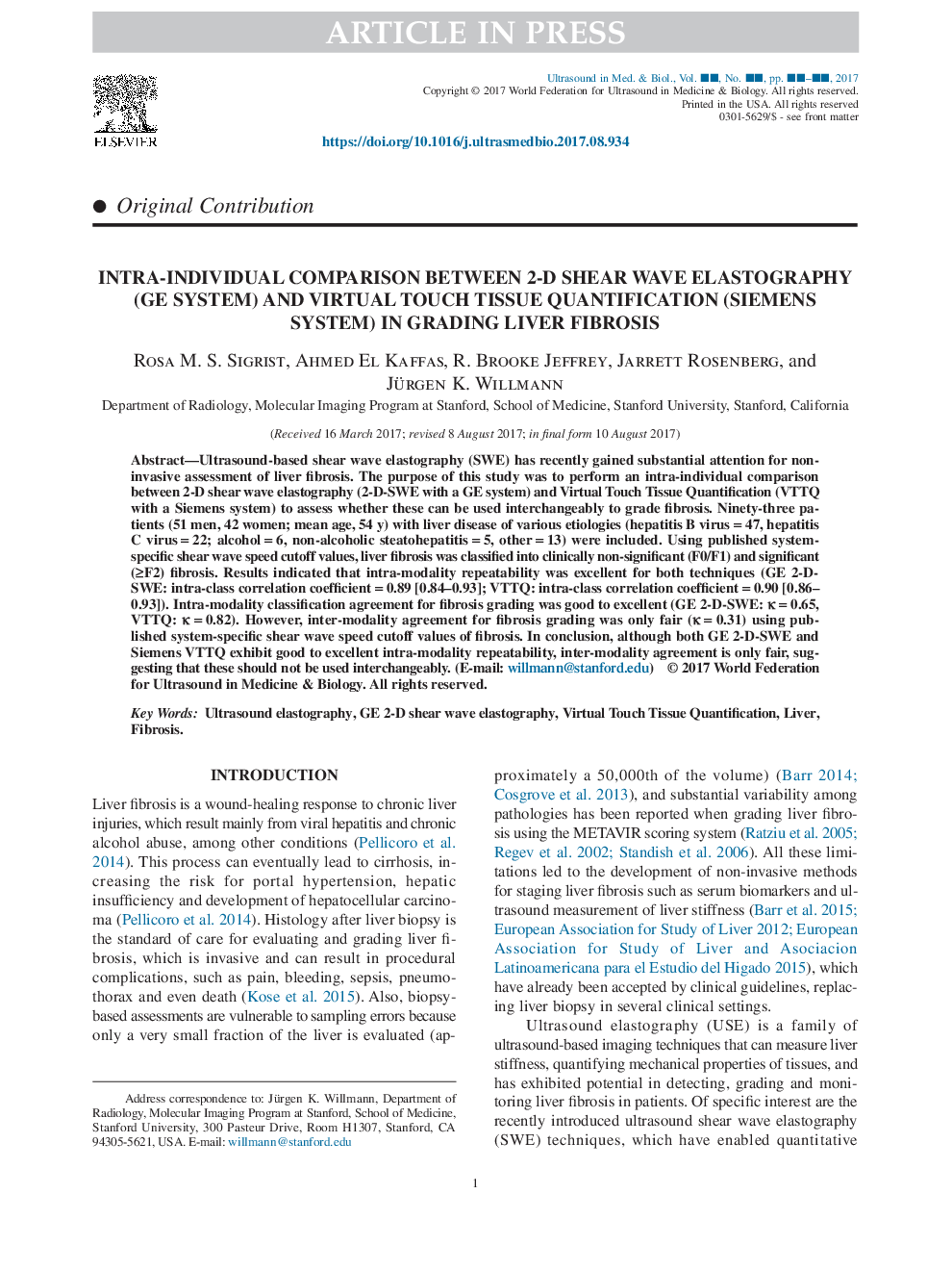| Article ID | Journal | Published Year | Pages | File Type |
|---|---|---|---|---|
| 8131460 | Ultrasound in Medicine & Biology | 2017 | 9 Pages |
Abstract
Ultrasound-based shear wave elastography (SWE) has recently gained substantial attention for non-invasive assessment of liver fibrosis. The purpose of this study was to perform an intra-individual comparison between 2-D shear wave elastography (2-D-SWE with a GE system) and Virtual Touch Tissue Quantification (VTTQ with a Siemens system) to assess whether these can be used interchangeably to grade fibrosis. Ninety-three patients (51 men, 42 women; mean age, 54 y) with liver disease of various etiologies (hepatitis B virusâ=â47, hepatitis C virusâ=â22; alcoholâ=â6, non-alcoholic steatohepatitisâ=â5, otherâ=â13) were included. Using published system-specific shear wave speed cutoff values, liver fibrosis was classified into clinically non-significant (F0/F1) and significant (â¥F2) fibrosis. Results indicated that intra-modality repeatability was excellent for both techniques (GE 2-D-SWE: intra-class correlation coefficientâ=â0.89 [0.84-0.93]; VTTQ: intra-class correlation coefficientâ=â0.90 [0.86-0.93]). Intra-modality classification agreement for fibrosis grading was good to excellent (GE 2-D-SWE: κâ=â0.65, VTTQ: κâ=â0.82). However, inter-modality agreement for fibrosis grading was only fair (κâ=â0.31) using published system-specific shear wave speed cutoff values of fibrosis. In conclusion, although both GE 2-D-SWE and Siemens VTTQ exhibit good to excellent intra-modality repeatability, inter-modality agreement is only fair, suggesting that these should not be used interchangeably.
Related Topics
Physical Sciences and Engineering
Physics and Astronomy
Acoustics and Ultrasonics
Authors
Rosa M.S. Sigrist, Ahmed El Kaffas, R. Brooke Jeffrey, Jarrett Rosenberg, Jürgen K. Willmann,
